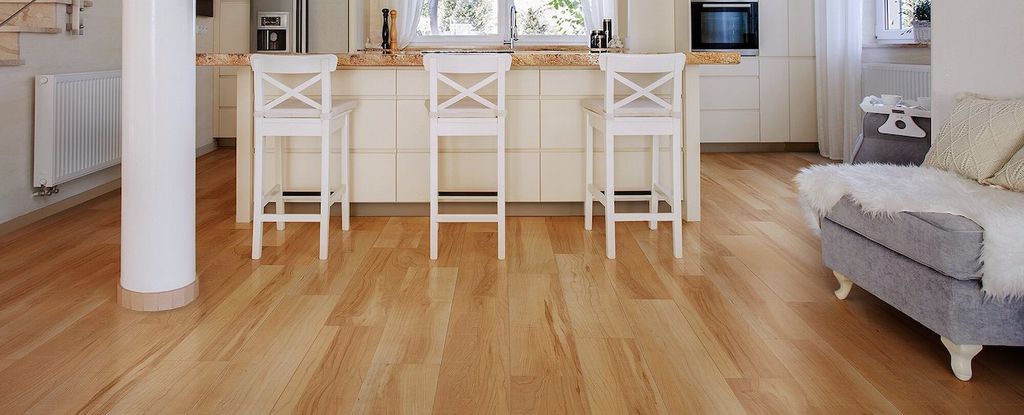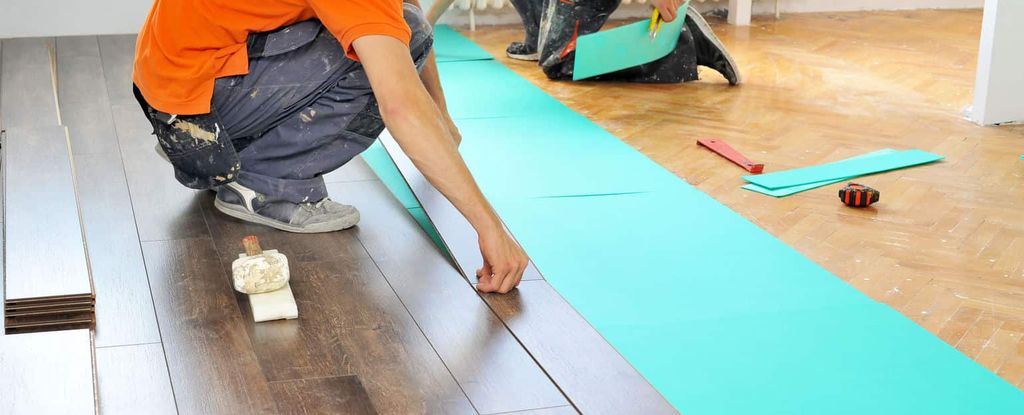When it comes to home flooring options, the possibilities seem endless. There are different species, different textures, and even different colors to choose from.
What’s more, one intriguing choice is gaining popularity: installing plastic flooring, also known as vinyl flooring, over existing wood floors. This innovative approach offers both benefits and potential challenges.
Read the rest of our blog for more information on hardwood flooring!
Balancing Benefits and Drawbacks
The advantages of installing plastic flooring over wood are noteworthy. Moisture resistance makes plastic flooring ideal for areas prone to humidity or flooding. Cleaning and maintenance are hassle-free, while a wide array of colors and styles allows for versatile customization.
Nonetheless, prospective installers should weigh these benefits against certain drawbacks. Plastic flooring can feel cold to the touch in colder weather, potentially making it uncomfortable for some.
Vinyl flooring can also produce noise when walked upon, which might be a consideration for households with high foot traffic. Lastly, it is vulnerable to damage from sharp objects, so care must be taken to avoid potential harm.

Considerations for a Successful Installation
Before embarking on the journey of placing plastic flooring over wood, certain critical factors must be taken into account. You can’t just install vinyl over any floor!
Firstly, the condition of the wood floor plays a pivotal role. A structurally sound wood floor, devoid of cracks, gaps, or soft spots, is essential for providing a stable foundation for the plastic flooring.
Additionally, the wood floor must be level to ensure the plastic flooring lies flat. Sometimes, a bit of sanding or leveling might be required to create an even surface. An underlayment, a material layer positioned between the wood and plastic floors, can also offer a smooth and soundproof base for the new flooring, enhancing comfort and insulation.
Crucially, not all plastic flooring types are compatible with wood floors. Opting for a plastic flooring variant specifically designed for use over wood prevents moisture entrapment that might lead to wood rot.
Neglecting these aspects could lead to future issues. Therefore, consulting a flooring professional is a wise step to ensure that these considerations align with your specific situation.

Making the Decision
Ultimately, the decision of whether to install plastic flooring over wood should be based on a case-by-case evaluation. If your wood floor is in impeccable condition, opting out of plastic flooring might be prudent. Conversely, if your wood floor exhibits damage or unevenness, plastic flooring could help solve its issues.
In conclusion, the concept of installing plastic flooring over existing wood holds promise and practicality. Remember, engaging with a flooring professional can make all the difference in achieving a successful and satisfying outcome.

